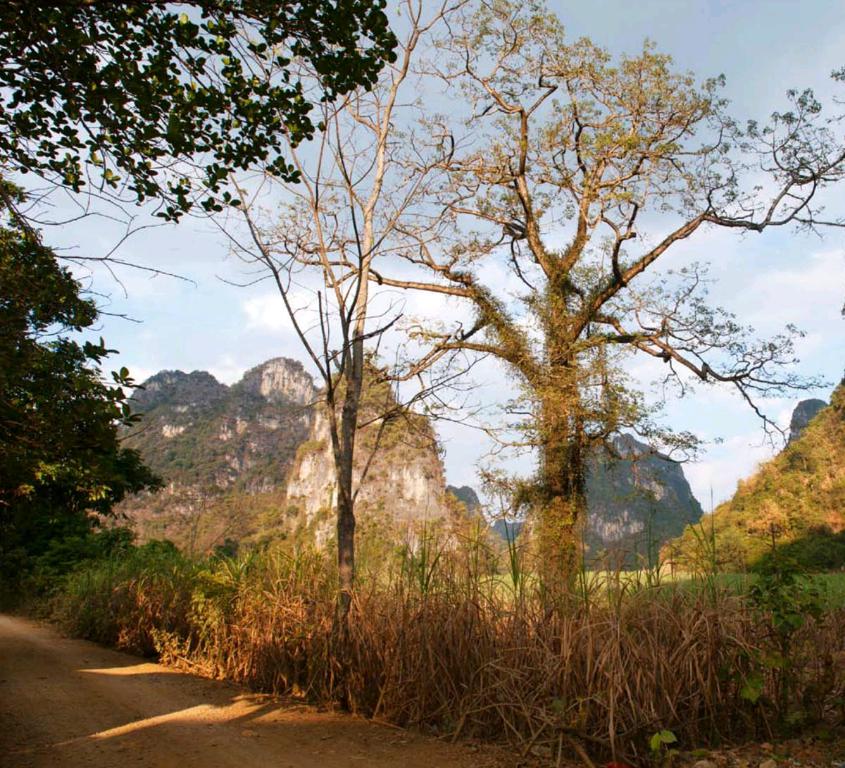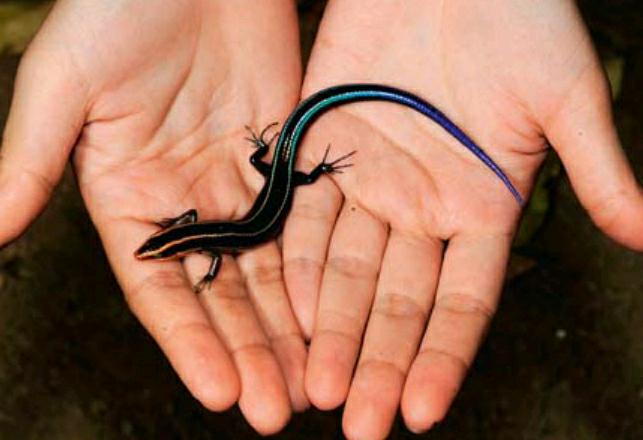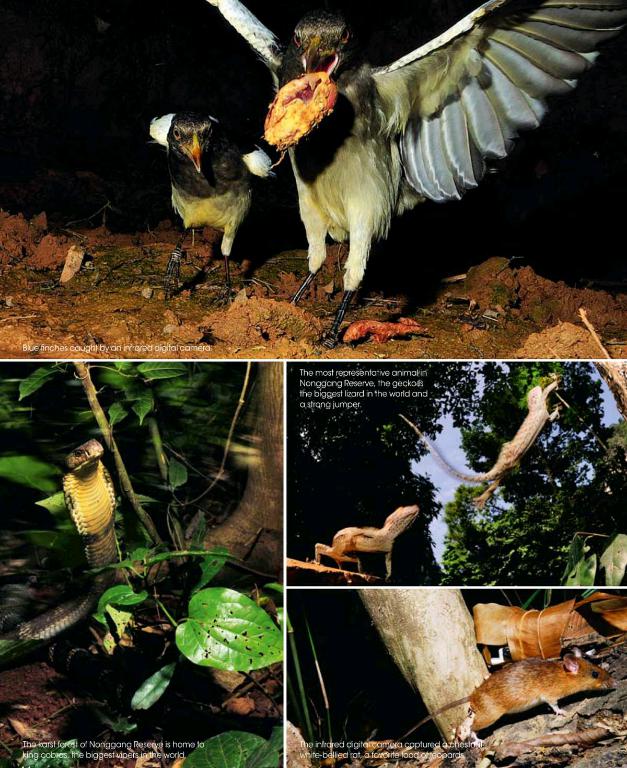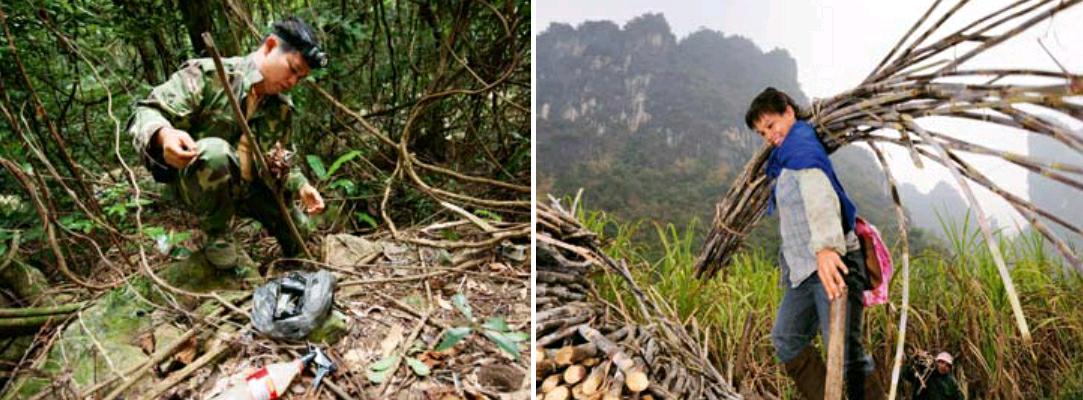Animal Instincts
by+Fan+Chang

In a satellite image of China, a deep green patch in the southwestern part of Guangxi Zhuang Autonomous Region marks Nonggang Reserve. It protects a large flourishing Karst forest which is home to many animals. The 10,077-square-kilometer forest is of the limestone monsoon variety, which is abundant in plants, especially limestone vegetation, which helps fuel rich biological diversity. Also, thanks to its often steep terrain, many places have never encountered human footsteps. Many experts both from home and abroad believe the area is home to some of the countrys most endangered animals, such as the crab-eating mongoose and spotted linsang. For Tao Tao, an independent photographer who shoots animals, Nonggang sounds like heaven.
The most representative animal in the reserve is what the locals know as “gejie,” a homophonic name inspired by its cry. The creature is actually a gecko, the largest and fiercest lizard in the world. In China, the animal can only be found in cliffs and dead trees on karst lands in Guangxi and Yunnan Province. During mating season, the gecko attracts the opposite sex with its cry, which can often be heard in Nonggang. Decades ago, because the gecko is considered a precious ingredient for traditional Chinese medicine, Guangxi villagers used to fight for access to gecko-heavy cliffs.“Today, because of strict supervision, no one dares hunt the gecko any longer,” remarks Chen Tianbo, director of Nonggang Reserve Station. “We are the best-protected reserve in Guangxi, home to precious and rare animals like the red deer and clouded leopard. Some places in the reserve are even beyond our reach.”
Armed with infrared digital cameras, Tao Tao heads out with Mr. Huang, the most experienced local forest ranger and a once famous hunter. Without any formal education in the field, Huang developed sharp judgment about the forest and animals. Nonggangs late autumn is so dry that leaves wither quickly and few critters can be found except some thirsty earthworms abandoning the parched soil. During this period, the hiding animals are particularly thirsty, so water is good bait to lure them out for pictures.
Tao and Huang scooped two barrels of water from a fish pond, and lugged them over a hill and up a tough road to an area covered with heavy vegetation and flourishing vines – perfect for wildlife. Huang pointed at a tree above a giant rock with a rut, exclaiming, “Look at the moss on the branch. It proves the rut once kept rainwater,” says Huang. “Animals should be familiar with this place.” He poured water into the rut. “Lets wait,” he continued. “Soon, bugs will come, which will draw birds. And then bigger animals will come after the birds.” Tao Tao installed a camera under the rock and camouflaged it with some fallen leaves. He then sprayed it with sheep urine to cover the human scent. Because of animals often sharp noses, even the smallest strange can make them suspicious.
After 12 hours, the water in the rut was untouched. Only a few Brahmin moths perched around the rut to enjoy the humidity. The camera captured a bat flying through, which was attracted by the waterhunting insects.
After 48 hours, the water in the rut was half gone. The camera caught an oriental green finch drinking the water before dawn, which at dusk returned with a small snake in its mouth. The water might have drawn some reptiles. During this period, the creatures the camera caught most were birds like the blue finch and magpie robin. A chestnut white-bellied rat appeared twice, followed by a starving collared owlet.
At 78 hours, little water was left. The mud keeping the water in the rut was scratched loose, exposing a 15-centimeter deep hole dug by some animal. Surprisingly, a Myanmar ferret badger took a good curious look at the lens and raised a paw. Mud was stuck on its paw. In China, southwestern Guangxi is the only place this animal can be found, whose favorite food is the earthworm. Like a network, the forest flows with information, which is passed through animals: Birds help beasts find water resource and water draws earthworms, which attract predators.
In the span of one month, the camera caught several precious animals including the leopard cat and tree shrew. If four or more predators are caught on camera in just a month, the forest is considered healthy. “Our reserve has lectured to the local villagers how important the forest is,” adds Huang. “It works. Former hunters handed over their guns and planted sugarcane. Few people cut down trees. We have learned lessons from other places: Without animals and trees on the mountain, we have nothing.”

